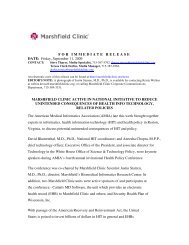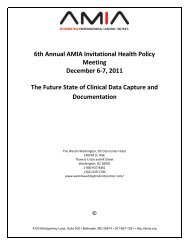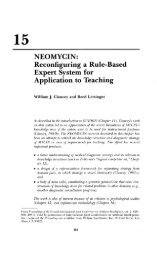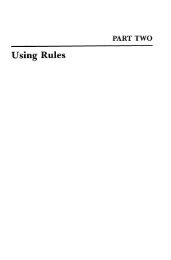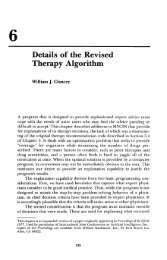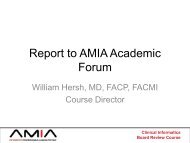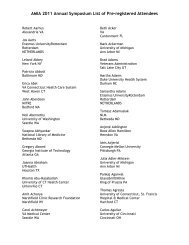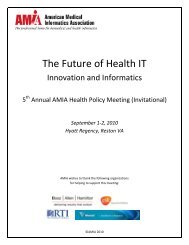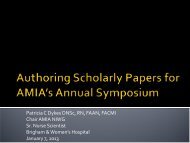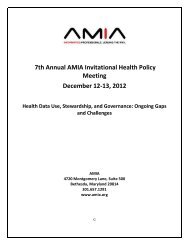Read transcript of the interview - American Medical Informatics ...
Read transcript of the interview - American Medical Informatics ...
Read transcript of the interview - American Medical Informatics ...
You also want an ePaper? Increase the reach of your titles
YUMPU automatically turns print PDFs into web optimized ePapers that Google loves.
AMIA Nursing <strong>Informatics</strong> Working Group<br />
Nursing <strong>Informatics</strong> Pioneer Interview<br />
<strong>American</strong> <strong>Medical</strong> <strong>Informatics</strong> Association Nursing <strong>Informatics</strong> History project<br />
Purpose<br />
The overall purpose <strong>of</strong> <strong>the</strong> Nursing <strong>Informatics</strong> History Project is to document and preserve <strong>the</strong> history <strong>of</strong><br />
nursing informatics.<br />
Copyright Statement<br />
The contents <strong>of</strong> <strong>the</strong> AMIA Nursing <strong>Informatics</strong> History project which includes <strong>the</strong> digital images, text, audio, and video<br />
recordings may be protected by United States copyright and/or o<strong>the</strong>r laws. The compilation <strong>of</strong> all content on this Web site is <strong>the</strong><br />
property <strong>of</strong> AMIA and is protected under U.S. copyright laws. The materials on this Web site are made available for use in research,<br />
teaching, and private study, but may not be used for any commercial purpose. For <strong>the</strong>se non-commercial purposes only, you may<br />
reproduce a single copy (print or download) <strong>of</strong> materials from this Web site without prior permission. Usage <strong>of</strong> some items may also<br />
be subject to additional restrictions imposed by <strong>the</strong> copyright owner and/or <strong>the</strong> repository. Thus transmission or reproduction <strong>of</strong><br />
more than a single research or teaching copy or a protected item requires <strong>the</strong> permission <strong>of</strong> <strong>the</strong> copyright owner. Please contact<br />
<strong>the</strong> collection holding repository for available information regarding copyright status <strong>of</strong> a particular digital image, text, audio or<br />
video recording. Unauthorized use <strong>of</strong> <strong>the</strong> Web site content may violate copyright and o<strong>the</strong>r laws, and is prohibited.<br />
The nature <strong>of</strong> historical archival and manuscript collections <strong>of</strong>ten makes it difficult to determine <strong>the</strong> copyright status <strong>of</strong> an<br />
item. Whenever possible, <strong>the</strong> AMIA NI History project and <strong>the</strong> collection holding repository provide available information about<br />
copyright owners and o<strong>the</strong>r restrictions in <strong>the</strong> catalog records, collection finding aids, and o<strong>the</strong>r metadata associated with digital<br />
images, texts, audio and video recordings. AMIA is providing this information as a service to aid users in determining <strong>the</strong> copyright<br />
status <strong>of</strong> an item. Ultimately, it is <strong>the</strong> user's responsibility to use an item according to <strong>the</strong> applicable laws and terms governing its<br />
use. AMIA is eager to hear from any copyright owners who are not properly identified.<br />
Conditions <strong>of</strong> Use<br />
By <strong>the</strong>ir use <strong>of</strong> <strong>the</strong>se digital images, texts, audio and video recordings, users agree to follow <strong>the</strong>se conditions <strong>of</strong> use:<br />
• for purposes <strong>of</strong> research, teaching and private study, users may reproduce (print or download) in accordance with fair use<br />
materials or link to materials from this Web site without prior permission, on <strong>the</strong> condition <strong>the</strong>y give proper credit<br />
• materials may not be used for any commercial purpose without prior written permission from AMIA and any o<strong>the</strong>r copyright<br />
owner<br />
• materials may not be re-published in print or electronic form without prior written permission from AMIA and any<br />
o<strong>the</strong>r copyright owner<br />
• materials may not be mounted on an additional server for public use, or for use by a set <strong>of</strong> subscribers<br />
Dr. Virginia K. Saba Nursing <strong>Informatics</strong> Pioneer Interview Page 1 <strong>of</strong> 21<br />
Copyright ©2008 <strong>American</strong> <strong>Medical</strong> <strong>Informatics</strong> Association. All rights reserved.<br />
AMIA 4915 St. Elmo Avenue, Suite 401 Be<strong>the</strong>sda, MD 20814
AMIA Nursing <strong>Informatics</strong> Working Group<br />
Nursing <strong>Informatics</strong> Pioneer Interview<br />
Virginia K. Saba<br />
Interviewer:<br />
Virginia Saba:<br />
Interviewer:<br />
Virginia Saba:<br />
Interviewer:<br />
Virginia Saba:<br />
Please introduce yourself and your current position.<br />
Virginia K. Saba, Distinguished Scholar at Georgetown University, Washington, D.C.<br />
I’m an adjunct pr<strong>of</strong>essor <strong>the</strong>re<br />
What’s your current definition <strong>of</strong> nursing informatics<br />
Well, it’s changed over time. The definition <strong>of</strong> informatics has changed over time. The<br />
one that I like best is <strong>the</strong> one that says informatics is <strong>the</strong> integration <strong>of</strong> computer science,<br />
which is hardware, and information science, which is s<strong>of</strong>tware, and nursing science,<br />
which is <strong>the</strong> nursing practice<br />
Describe your career in nursing, and <strong>the</strong>n how did you get into informatics<br />
Oh, my career in nursing is pretty sporadic. So, basically, I was a home health/public<br />
health community health nurse when I first went into practice. But in late 1960’s, I<br />
worked at <strong>the</strong> National Institute <strong>of</strong> Perinatal Research, where <strong>the</strong>y were conducting a<br />
study <strong>of</strong> 50,000 pregnant women. And I had <strong>the</strong> job <strong>of</strong> coding delivery, labor and<br />
delivery. Well, my biggest argument occurred with a statistician who said, ‘The statistics<br />
show that <strong>the</strong> women during labor went from 1 to 99 centimeters.’ And I said, ‘Sir, that’s<br />
impossible, 10 is <strong>the</strong> highest dilation a woman can go.’ He said, ‘I’m sorry, <strong>the</strong> statistics<br />
show 1 to 99. You don’t understand anything about computer processing.’ Well, anyone<br />
who tells me I don’t understand anything about computer processing got my ire up, and I<br />
started taking courses at IBM. They were <strong>the</strong> only courses at <strong>the</strong> time that were being<br />
<strong>of</strong>fered. And <strong>the</strong>n courses were being <strong>of</strong>fered by <strong>the</strong> Department <strong>of</strong> Defense and in<br />
Department <strong>of</strong> Agriculture.<br />
So after taking several <strong>of</strong> courses, we all agreed that I might as well get a degree and put<br />
my courses to use, so I applied <strong>the</strong> <strong>American</strong> University and took a computer science<br />
Dr. Virginia K. Saba Nursing <strong>Informatics</strong> Pioneer Interview Page 2 <strong>of</strong> 21<br />
Copyright ©2008 <strong>American</strong> <strong>Medical</strong> <strong>Informatics</strong> Association. All rights reserved.<br />
AMIA 4915 St. Elmo Avenue, Suite 401 Be<strong>the</strong>sda, MD 20814
AMIA Nursing <strong>Informatics</strong> Working Group<br />
Nursing <strong>Informatics</strong> Pioneer Interview<br />
certificate and degree, which finally led to a doctor <strong>of</strong> education and information science<br />
from <strong>the</strong> <strong>American</strong> University.<br />
Interviewer:<br />
When did you get that certificate<br />
Virginia Saba: Well, I can’t remember. But I got my doctorate in ’86, so <strong>the</strong> certificate was in ’84,<br />
probably, and <strong>the</strong> master was in probably ’82.<br />
Interviewer:<br />
Virginia Saba:<br />
When you started taking <strong>the</strong>se computer courses, what did you have in mind<br />
Nothing, just to be able to conduct… use <strong>the</strong> computer for research, I guess. Then I<br />
joined <strong>the</strong> Division <strong>of</strong> Nursing <strong>of</strong> <strong>the</strong> Public Health Service, and I was put in <strong>the</strong><br />
Manpower Analysis Branch because I liked statistics and <strong>the</strong>y needed someone in that<br />
area. And <strong>the</strong> Division <strong>of</strong> Nursing is really one <strong>of</strong> <strong>the</strong> leaders that started to fund<br />
contracts where… in <strong>the</strong> field <strong>of</strong>… well, <strong>the</strong>y didn’t call it tech… <strong>the</strong>y called technology<br />
<strong>of</strong> management information system at <strong>the</strong> time. And that’s how it all began. It was<br />
computer processing using a mainframe, and keep, you know, cards not online—<br />
processing <strong>of</strong> IBM cards to analyze statistical data.<br />
So as part <strong>of</strong> my role, since I was a public health nurse, <strong>the</strong>y asked me to help conduct <strong>the</strong><br />
surveys <strong>of</strong> public health nursing in home health care agencies. So that became my task,<br />
as <strong>the</strong> nurse consultant in <strong>the</strong> Public Health Service, with a team <strong>of</strong> statisticians. Well,<br />
<strong>the</strong> two <strong>of</strong> us would get our data from <strong>the</strong> states. They submitted <strong>the</strong>ir data. We designed<br />
<strong>the</strong> form. We sent it out, and <strong>the</strong> state and territorial directors <strong>of</strong> nursing collected <strong>the</strong><br />
data in each <strong>of</strong> <strong>the</strong>ir states and sent it to us. We had a nice committee, but we couldn’t<br />
agree on definitions and terms. So how could we code statistical data, when we couldn’t<br />
agree on <strong>the</strong> age categories, <strong>the</strong> program categories, even on Perinatal categories we<br />
couldn’t even agree on terms.<br />
So a lot <strong>of</strong> our early beginning was coding for <strong>the</strong> Public Health Nursing Surveys. And<br />
that’s how I got into, and I… it just led from one thing to ano<strong>the</strong>r.<br />
Dr. Virginia K. Saba Nursing <strong>Informatics</strong> Pioneer Interview Page 3 <strong>of</strong> 21<br />
Copyright ©2008 <strong>American</strong> <strong>Medical</strong> <strong>Informatics</strong> Association. All rights reserved.<br />
AMIA 4915 St. Elmo Avenue, Suite 401 Be<strong>the</strong>sda, MD 20814
AMIA Nursing <strong>Informatics</strong> Working Group<br />
Nursing <strong>Informatics</strong> Pioneer Interview<br />
That led into contracts with two states, New Jersey and Florida, where we developed<br />
statewide systems for public health/home health nursing, because at that time, <strong>the</strong>y were<br />
implementing Medicare and Medicaid, and <strong>the</strong>y needed facts about <strong>the</strong> agencies, <strong>the</strong><br />
staff, and <strong>the</strong> programs <strong>the</strong>y were providing.<br />
And so that’s how I got into it. I had nothing to do with informatics. It was really from<br />
using <strong>the</strong> computer to process statistical data for public health nursing.<br />
Interviewer:<br />
Virginia Saba:<br />
What were some <strong>of</strong> those early projects that you were involved in When you talk about<br />
<strong>the</strong> surveys, what sort <strong>of</strong> things were <strong>the</strong>y looking at<br />
They were looking at programs that nurses were involved in. We were counting nursing<br />
personnel by category, as well as we were counting programs that <strong>the</strong>y were involved in.<br />
And, and we got involved in <strong>the</strong> community, in what <strong>the</strong>y did for <strong>the</strong> patients in <strong>the</strong><br />
community. So it was an exciting time. We put out publications. You got your name in<br />
<strong>the</strong> publications. And <strong>the</strong> Division <strong>of</strong> Nursing was getting quite a bit <strong>of</strong> credibility for<br />
this.<br />
But on, on <strong>the</strong> o<strong>the</strong>r side, while this was happening, o<strong>the</strong>r things were going on. Dr.<br />
Harriet Worley came to visit me one day in <strong>the</strong> 70’s, and said, ‘Let’s put on a conference<br />
to talk about what o<strong>the</strong>r people are doing besides, besides you and <strong>the</strong> Division <strong>of</strong><br />
Nursing.’ So we sat toge<strong>the</strong>r, put a list <strong>of</strong> names toge<strong>the</strong>r, and she came up with a<br />
Nursing Information Systems Conference…<br />
Virginia Saba:<br />
Well, I think I’d like to re-track and put this before what I said. In <strong>the</strong>… in <strong>the</strong> early<br />
70’s, because <strong>of</strong> this Medicare and Medicaid, and everybody deciding <strong>the</strong>y wanted to buy<br />
a mainframe to process data, we, we had a collaborative with <strong>the</strong> National Link for<br />
Nursing to do teaching home health and public health agencies how to collect statistical<br />
data and cost-out nursing care. And so we put on <strong>the</strong>se national workshops, <strong>the</strong> first<br />
workshops ever put on, and we had one computer <strong>the</strong>re by <strong>the</strong> Nor<strong>the</strong>rn Virginia Visiting<br />
Dr. Virginia K. Saba Nursing <strong>Informatics</strong> Pioneer Interview Page 4 <strong>of</strong> 21<br />
Copyright ©2008 <strong>American</strong> <strong>Medical</strong> <strong>Informatics</strong> Association. All rights reserved.<br />
AMIA 4915 St. Elmo Avenue, Suite 401 Be<strong>the</strong>sda, MD 20814
AMIA Nursing <strong>Informatics</strong> Working Group<br />
Nursing <strong>Informatics</strong> Pioneer Interview<br />
Nurses Association. And <strong>the</strong>y were showing us how <strong>the</strong>y were processing data using this<br />
monstrosity, and which is what I call, processing IBM code.<br />
And that led to a series <strong>of</strong> workshops around <strong>the</strong> country, several documents, and ano<strong>the</strong>r<br />
document that described all <strong>the</strong> systems following it, by 1997, where <strong>the</strong>y ’77, where<br />
<strong>the</strong>y… a final work conference culminating this five-year project. And, and that’s where<br />
we got visibility, because when going around <strong>the</strong> country putting on <strong>the</strong>se workshops,<br />
you got to meet everybody who was doing anything. They’d come up and say, ‘Oh, I’m<br />
doing something in developing a CAI program, a computer-assisted program. Are you<br />
interested in that’ And, <strong>of</strong> course, you’d say, ‘Yes.’ And so I started to learn who was<br />
doing what, where around <strong>the</strong> country as a side product <strong>of</strong> <strong>the</strong>se workshops. And<br />
that’s… so that when Dr. Harriet Werley came and said, ‘Let’s put on a, a conference,’ I<br />
knew all <strong>the</strong> people that she should be calling, because I had been involved or heard<br />
from… when you’re a federal employee, people come… think you’re going to give <strong>the</strong>m<br />
money, which we didn’t, but <strong>the</strong>y, <strong>the</strong>y did come and talk about what <strong>the</strong>y were doing.<br />
And so I heard a lot from a lot <strong>of</strong> pioneers, and that got me excited and interested in <strong>the</strong><br />
field.<br />
Interviewer:<br />
Virginia Saba:<br />
Anything else you can say about your work with Harriet Werley<br />
Well, from that, we had this one conference, and that led to <strong>the</strong> Nursing Minimum<br />
Dataset Conference, which she spearheaded with… <strong>the</strong> first one was with Margaret Greer<br />
at <strong>the</strong> University <strong>of</strong> Illinois, and <strong>the</strong> second one was with Norma Lang at <strong>the</strong> University<br />
<strong>of</strong> Milwaukee. But we were involved… I was involved in helping select <strong>the</strong>se people,<br />
because I knew all <strong>the</strong> names and I had all <strong>the</strong> addresses, which a lot <strong>of</strong> people didn’t<br />
have at <strong>the</strong> time.<br />
And so she was <strong>the</strong> who… I was a little shy… but, she had more clout and she knew a lot<br />
more than I did, so she said, ‘Let’s give it to <strong>the</strong> <strong>American</strong> Nurses Association and put in<br />
a resolution to make this a new specialty.’ And we got our little team toge<strong>the</strong>r, and in<br />
1984, we got <strong>the</strong> resolution passed by <strong>the</strong> <strong>American</strong> Nurses Association, and <strong>the</strong> Council<br />
Dr. Virginia K. Saba Nursing <strong>Informatics</strong> Pioneer Interview Page 5 <strong>of</strong> 21<br />
Copyright ©2008 <strong>American</strong> <strong>Medical</strong> <strong>Informatics</strong> Association. All rights reserved.<br />
AMIA 4915 St. Elmo Avenue, Suite 401 Be<strong>the</strong>sda, MD 20814
AMIA Nursing <strong>Informatics</strong> Working Group<br />
Nursing <strong>Informatics</strong> Pioneer Interview<br />
on Computer Applications from formed. And from that we would meet to form different<br />
resolutions that got passed, like saying technology should be part <strong>of</strong> <strong>the</strong> nursing practice.<br />
We put out four monographs. We put out a directory <strong>of</strong> who’s doing what where. We<br />
put… gave awards to <strong>the</strong> Nurse <strong>of</strong> <strong>the</strong> Year. And we had a good group going, and it was<br />
quite exciting.<br />
But, also, while I was in <strong>the</strong> Division <strong>of</strong> Nursing, on <strong>the</strong> o<strong>the</strong>r side, I was working with<br />
McMart… what’s her name Farley…<br />
Interviewer:<br />
Virginia Saba:<br />
So you were working…<br />
When I was in <strong>the</strong> Division <strong>of</strong> Nursing, I was approached by Coralee Farley from <strong>the</strong><br />
National Center for Health Nurse… Health… National Center for Health Services<br />
Research, who was on <strong>the</strong> board <strong>of</strong> <strong>the</strong> SCAMC, <strong>the</strong> Symposium on Computer<br />
Applications in Nursing in health care… Computer Applications in <strong>Medical</strong> Care. And<br />
she said, ‘Well, you know so much about what’s going on. Why don’t you put a nursing<br />
session on at SCAMC this fall’ And I said, ‘Sure.’ I never turned anything down.<br />
And so we put toge<strong>the</strong>r a sessions. That was in 1981. We put toge<strong>the</strong>r several… one or<br />
two sessions, and we got all <strong>the</strong> nurses we knew who were willing to speak at this<br />
SCAMC. And that was <strong>the</strong> first SCAMC where nurses were presented, or allowed to be<br />
presented. And since <strong>the</strong>n, we’ve been at every SCAMC or AMIA since.<br />
But, also, during that session, that meeting, we said, ‘let’s get toge<strong>the</strong>r after <strong>the</strong> meeting,<br />
and see how, how many nurses are here.’ And I think we counted 25 or 30 nurses. And<br />
we started a little special interest group, where we exchanged names and addresses <strong>of</strong> all<br />
<strong>the</strong> people who were <strong>the</strong>re, so <strong>the</strong>y could work with o<strong>the</strong>r people in <strong>the</strong>se same area. And<br />
we started out little network forming, which today ends with what I call CARING, as <strong>the</strong><br />
networking, networking activity, which has continued since <strong>the</strong>n. And SCAMC was<br />
where we all met every year, and where we hobnobbed with each o<strong>the</strong>r, and sort <strong>of</strong><br />
stimulated each o<strong>the</strong>r. And that, that was a big, big, big step forward.<br />
Dr. Virginia K. Saba Nursing <strong>Informatics</strong> Pioneer Interview Page 6 <strong>of</strong> 21<br />
Copyright ©2008 <strong>American</strong> <strong>Medical</strong> <strong>Informatics</strong> Association. All rights reserved.<br />
AMIA 4915 St. Elmo Avenue, Suite 401 Be<strong>the</strong>sda, MD 20814
AMIA Nursing <strong>Informatics</strong> Working Group<br />
Nursing <strong>Informatics</strong> Pioneer Interview<br />
Also, in 1981, or it was before 1981… it was in 1980, Dorothy Polklington from Tri<br />
Service Research… from Tri Service, who was putting in <strong>the</strong> Tri Service Information<br />
System in <strong>the</strong> military said, ‘We want to give <strong>the</strong> nurses in <strong>the</strong> army a workshop. So will<br />
you help me put it on’ So she and I put toge<strong>the</strong>r a workshop, and that led to <strong>the</strong>n <strong>the</strong><br />
first NIH workshop... conference, which was held in 1981, as well.<br />
So in 1981, is when I would say that nursing really got involved in computer technology<br />
in nursing. And we were really excited, and it was a small group who was hobnobbing<br />
with each o<strong>the</strong>r.<br />
And <strong>the</strong>n Sue even got in at that time, when she had a workshop in… at St. Mary’s<br />
Hospital in Baltimore. That was about 1983, if I’m not mistaken, and 1984. And<br />
worships started emerging all about <strong>the</strong> country, and it was great.<br />
Interviewer:<br />
Virginia Saba:<br />
Was <strong>the</strong>re an a-ha moment<br />
Well, I guess it happened all along. In sometime in <strong>the</strong> late 70’s, and I don’t know,<br />
remember, National Center for Health Services Research funded $10 million, $1 million<br />
to each <strong>of</strong> 10 projects to develop a health information system, or patient care information<br />
system. That’s when HELP out <strong>of</strong> Latter Day Saints was formed; Technicon was formed<br />
in San Mateo, California, and several… Reigenstrief… whatever that’s called in Indiana<br />
was formed, and some <strong>of</strong> <strong>the</strong>se early systems. And <strong>the</strong>y had one, a Burrough system at<br />
Duke, and I said, ‘Why aren’t…when nurses got involved, and <strong>the</strong>y wanted to document<br />
patient care. And that’s how it all got started.<br />
The scientists from <strong>the</strong> NASA program that… <strong>the</strong> space program that went bust in<br />
California wanted a job, so <strong>the</strong>y went to San Mateo Hospital and studied <strong>the</strong> nursing<br />
station, which <strong>the</strong>y thought was <strong>the</strong> hub <strong>of</strong> patient care. And that’s when <strong>the</strong> first nursing<br />
care protocols were developed, care plans were designed, and <strong>the</strong> Technicon system took<br />
<strong>of</strong>f. Based on that, <strong>the</strong> NIH took <strong>the</strong> Technicon system, <strong>the</strong> National Institutes <strong>of</strong> Health,<br />
Dr. Virginia K. Saba Nursing <strong>Informatics</strong> Pioneer Interview Page 7 <strong>of</strong> 21<br />
Copyright ©2008 <strong>American</strong> <strong>Medical</strong> <strong>Informatics</strong> Association. All rights reserved.<br />
AMIA 4915 St. Elmo Avenue, Suite 401 Be<strong>the</strong>sda, MD 20814
AMIA Nursing <strong>Informatics</strong> Working Group<br />
Nursing <strong>Informatics</strong> Pioneer Interview<br />
and adapted it in 1978, and <strong>the</strong>y developed ano<strong>the</strong>r strategy for documenting nursing<br />
care, based on NASA’s hierarchy <strong>of</strong> needs. Burroughs developed ano<strong>the</strong>r strategy.<br />
And so we started putting all <strong>of</strong> <strong>the</strong>se strategies toge<strong>the</strong>r in a book, and we started<br />
teaching about <strong>the</strong>m at <strong>the</strong> NIH, where <strong>the</strong>y had a … what’d <strong>the</strong>y call it—a course for<br />
Nursing and Heath Pr<strong>of</strong>essionals at <strong>the</strong> National Institutes <strong>of</strong> Health. And so Kathleen<br />
McCormick and I started this course on nursing information systems, which we thought<br />
was a hot idea at <strong>the</strong> time.<br />
And from our course and all <strong>the</strong> materials that I had to collect, to teach <strong>the</strong> course, we<br />
said, ‘Let’s put it in a book.’ And that’s how <strong>the</strong> first book was prepared in 1986. And<br />
we did it toge<strong>the</strong>r, and <strong>the</strong>n from <strong>the</strong>n we did a second edition in 1996, and <strong>the</strong>n we got<br />
smart and we hired…we didn’t hire, we invited guest experts to submit chapters for <strong>the</strong><br />
third and fourth edition. And that’s how <strong>the</strong> text… that’s how our textbooks got formed.<br />
Interviewer:<br />
Virginia Saba:<br />
The name <strong>of</strong> your first textbook<br />
Essentials <strong>of</strong> Computers for Nurses.<br />
And <strong>the</strong> term ‘informatics’ came about in 1997… 1977, when <strong>the</strong> French coined<br />
informatics to mean information in <strong>the</strong> computer milieu. The Russians gave it a title as<br />
well, and so some <strong>of</strong> <strong>the</strong> nurses in Europe took it on. And <strong>the</strong>n Dr. Marion Ball put it on<br />
<strong>the</strong> title <strong>of</strong> her first book. And so, all <strong>of</strong> a sudden, ‘informatics emerged as <strong>the</strong> term<br />
instead <strong>of</strong> ‘computer technology.’ And it’s still not widely used. People still don’t<br />
understand when we say ‘nursing informatics.’ They prefer ‘information technology.’<br />
That makes more sense. But we use ‘management information system,’ ‘computer<br />
technology,’ and ‘essentials <strong>of</strong> computers for nursing.’<br />
And we found <strong>the</strong>re was applications in practice, administration, education, and research,<br />
and we would write about <strong>the</strong> whole four areas. And doing at that you would get at <strong>the</strong><br />
practitioners in hospitals, and what <strong>the</strong>y were doing in hospitals; <strong>the</strong> administration, and<br />
what <strong>the</strong>y were doing for managing patient care, like acuity and staffing and scheduling;<br />
Dr. Virginia K. Saba Nursing <strong>Informatics</strong> Pioneer Interview Page 8 <strong>of</strong> 21<br />
Copyright ©2008 <strong>American</strong> <strong>Medical</strong> <strong>Informatics</strong> Association. All rights reserved.<br />
AMIA 4915 St. Elmo Avenue, Suite 401 Be<strong>the</strong>sda, MD 20814
AMIA Nursing <strong>Informatics</strong> Working Group<br />
Nursing <strong>Informatics</strong> Pioneer Interview<br />
and what <strong>the</strong>y were doing in education, which was primarily computer-assisted<br />
instruction, interactive video. S<strong>of</strong>tware programs were emerging everywhere, and <strong>the</strong>re<br />
were a whole group <strong>of</strong> pioneers that Christine Balwall used to collect all <strong>the</strong> s<strong>of</strong>tware<br />
programs and put <strong>the</strong>m in a directory <strong>of</strong> s<strong>of</strong>tware programs that was published by <strong>the</strong><br />
National League for Nursing for several years, until it ended in about 19… I don’t<br />
know… 1995 or… 1995.<br />
Interviewer:<br />
Virginia Saba:<br />
Interviewer:<br />
Virginia Saba:<br />
What do you see as your primary contributions to <strong>the</strong> field<br />
What are my contributions to <strong>the</strong> field Just I’m involved. I keep pushing. I also was on<br />
<strong>the</strong> International… <strong>the</strong> International <strong>Medical</strong> <strong>Informatics</strong> Association. I became a nurse<br />
from USA that was on <strong>the</strong> board. And so that… I was on <strong>the</strong> board for nine years, so that<br />
meant promoting international conferences and international use <strong>of</strong> technology around<br />
<strong>the</strong> world. And that’s still going on. So, you know, I keep… I guess I create new ideas,<br />
and people carry <strong>the</strong>m out.<br />
You’re involved with <strong>the</strong> National Committee on Vital and Health Statistics, right<br />
I was involved for about five years with <strong>the</strong> National Committee on Health and Vital<br />
Statistics. I was <strong>the</strong>re representing <strong>the</strong> ANA… at one point, <strong>the</strong> ANA was funding some<br />
<strong>of</strong> us to go to <strong>the</strong>se meetings that were talking about technology. And so I would go to<br />
that meeting to talk to represent nursing. And we always sat in <strong>the</strong> back. They never let<br />
us at <strong>the</strong> table. And for years, we tried to get a nurse at <strong>the</strong> table. Not until last year did<br />
we actually get a nurse at <strong>the</strong> table. It took 20 years <strong>of</strong> politicking to get a nurse to be at<br />
<strong>the</strong> table to fight for nursing, because <strong>the</strong>y were passing and reviewing and endorsing<br />
technological aspects for health and human services, which <strong>the</strong>n became law. And, for<br />
example, <strong>the</strong> HIPAA legislation, when <strong>the</strong>y were developing <strong>the</strong> safety regulation, <strong>the</strong>y<br />
had to select <strong>the</strong> terminologies that were used to transmit electronic billing. Nursing was<br />
not involved. And <strong>the</strong>y said, ‘Well, you’ll get into HIPAA Part 2.’ So in HIPAA Part 2,<br />
which was <strong>the</strong> Patient <strong>Medical</strong> Record Initiative, we hope to have gotten in <strong>the</strong>re. And<br />
<strong>the</strong> only thing we’ve gotten in was we got SNO Med approved and nursing terminologies<br />
Dr. Virginia K. Saba Nursing <strong>Informatics</strong> Pioneer Interview Page 9 <strong>of</strong> 21<br />
Copyright ©2008 <strong>American</strong> <strong>Medical</strong> <strong>Informatics</strong> Association. All rights reserved.<br />
AMIA 4915 St. Elmo Avenue, Suite 401 Be<strong>the</strong>sda, MD 20814
AMIA Nursing <strong>Informatics</strong> Working Group<br />
Nursing <strong>Informatics</strong> Pioneer Interview<br />
are in SNOMED. And <strong>the</strong>y said, ‘Well, you should be satisfied with that.’ And that’s<br />
<strong>the</strong> best we’ve done so far to convince <strong>the</strong> federal government that nursing does make a<br />
difference.<br />
And my goal is to make nursing visible, viable, and I’m… I don’t know if I want to get<br />
paid for what we do, but I want to credit for what we do. So, <strong>the</strong>refore, I want to get a<br />
room rate, and I want to get coded and considered a pr<strong>of</strong>essional, like all <strong>the</strong> o<strong>the</strong>r<br />
pr<strong>of</strong>essions are in <strong>the</strong> eyes <strong>of</strong> <strong>the</strong> federal government.<br />
Interviewer:<br />
Virginia Saba:<br />
Interviewer:<br />
Virginia Saba:<br />
When you first started out in <strong>the</strong> field were people supportive <strong>of</strong> what you were doing<br />
I guess <strong>the</strong>y said, ‘What is a nurse doing here’ I’ve gone to many meetings where I was<br />
<strong>the</strong> only nurse. I still go to many meeting where I’m <strong>the</strong> only nurse. ‘What are you<br />
doing here and why are you here’ But now <strong>the</strong>y know who I am. I’m really quite<br />
known, so all I have to do is walk in <strong>the</strong> room and <strong>the</strong>y hear, ‘Oh-oh, here comes<br />
nursing.’ And, and, so I, just by my presence, remind <strong>the</strong>m that nursing is part <strong>of</strong> <strong>the</strong><br />
health care system.<br />
When you first started promoting <strong>the</strong> use <strong>of</strong> technology, what <strong>the</strong> attitude <strong>the</strong>n<br />
There was <strong>the</strong>n and <strong>the</strong>re still is now push-back on <strong>the</strong> technology. Many people are<br />
afraid that it’s going to take away <strong>the</strong>ir job. And so <strong>the</strong>re’s still resistance in health care<br />
about <strong>the</strong> introduction <strong>of</strong>, <strong>of</strong> technology. But we’ve gotten more sophisticated<br />
equipment. So people talk about technology, but <strong>the</strong>y don’t talk that <strong>the</strong> hardware went<br />
from <strong>the</strong> mainframe, to <strong>the</strong> mini computer, to <strong>the</strong> super computer. And nothing much<br />
happened because you had to have all <strong>the</strong>se programmers that you had to interface with.<br />
But all <strong>of</strong> a sudden, in 1982, ’81, <strong>the</strong> PC, <strong>the</strong> personal computer came into being, and all<br />
<strong>of</strong> a sudden, we could do our own thing. We could program our own… s<strong>of</strong>tware. We<br />
could take generic programs, and become independent <strong>of</strong> <strong>the</strong> programming and <strong>the</strong><br />
analyst who sat out <strong>the</strong>re controlling us in <strong>the</strong> early beginning. And because <strong>of</strong> that,<br />
Dr. Virginia K. Saba Nursing <strong>Informatics</strong> Pioneer Interview Page 10 <strong>of</strong> 21<br />
Copyright ©2008 <strong>American</strong> <strong>Medical</strong> <strong>Informatics</strong> Association. All rights reserved.<br />
AMIA 4915 St. Elmo Avenue, Suite 401 Be<strong>the</strong>sda, MD 20814
AMIA Nursing <strong>Informatics</strong> Working Group<br />
Nursing <strong>Informatics</strong> Pioneer Interview<br />
nursing <strong>the</strong>n could say, ‘I can do my own s<strong>of</strong>tware.’ ‘I can design my own courseware.’<br />
‘I can teach my own students.’ ‘I can write my own care plan.’<br />
And that gave <strong>the</strong>m power. And because <strong>of</strong> power, and having this one-to-one with a PC,<br />
it’s your machine, a lot <strong>of</strong> smart researchers, a lot <strong>of</strong> smart nursing leaders got into <strong>the</strong><br />
field, and wrote programs, marketed <strong>the</strong>m, and put <strong>the</strong>m in… into use.<br />
Interviewer:<br />
Virginia Saba:<br />
Significant events in <strong>the</strong> development <strong>of</strong> <strong>the</strong> nursing informatics field. Was that one <strong>of</strong><br />
<strong>the</strong>m<br />
Well, <strong>the</strong> change in technology, and, also, <strong>the</strong> change in operating systems, which went<br />
from sequential storage to random access. Because <strong>of</strong> <strong>the</strong> random access storage, you<br />
could <strong>the</strong>n, <strong>the</strong>n do some interactive databases, and makes <strong>the</strong> relationships… we<br />
couldn’t do relationships early. We just did one-to-one. And now that we can do<br />
relationships and everybody wants everything out <strong>of</strong> <strong>the</strong> computer now. They want<br />
everything, to <strong>the</strong> point that <strong>the</strong>y’ve gone to <strong>the</strong> o<strong>the</strong>r extreme—<strong>the</strong>y want <strong>the</strong> computer<br />
to do whatever <strong>the</strong>y think comes into <strong>the</strong>ir heads. We still don’t understand what coding<br />
is all about, and what <strong>the</strong> computer can actually process, and <strong>the</strong>y still don’t understand<br />
that. That’s <strong>the</strong> hardest thing to get across, understanding <strong>the</strong> use <strong>of</strong> data, data processing<br />
and databases. And that’s still <strong>the</strong> big problem.<br />
I can… I did that today in my lecture. I said, ‘How many data amounts are in my name<br />
One, two, three, four or five’ They didn’t say one, but usually I say one. But today <strong>the</strong>y<br />
did say four. And to teach <strong>the</strong>m <strong>the</strong> atomic level data is very hard, and <strong>the</strong>y don’t think<br />
that way. They don’t know how to compartmentalize <strong>the</strong>ir brain to talk about patient<br />
problems, patient care, or intervention and patient outcome. And <strong>the</strong>y got to… <strong>the</strong>y do it<br />
automatically, but <strong>the</strong>y don’t think about it as three steps. They think about it as, ‘Well,<br />
<strong>the</strong> patient has a fever. I’m going to give him aspirin.’ I mean, and <strong>the</strong> fever went away.<br />
They don’t think that that was three things—<strong>the</strong> problem <strong>of</strong> fever, <strong>the</strong> aspirin to treat it,<br />
and <strong>the</strong> result was <strong>the</strong> fever went away.<br />
Dr. Virginia K. Saba Nursing <strong>Informatics</strong> Pioneer Interview Page 11 <strong>of</strong> 21<br />
Copyright ©2008 <strong>American</strong> <strong>Medical</strong> <strong>Informatics</strong> Association. All rights reserved.<br />
AMIA 4915 St. Elmo Avenue, Suite 401 Be<strong>the</strong>sda, MD 20814
AMIA Nursing <strong>Informatics</strong> Working Group<br />
Nursing <strong>Informatics</strong> Pioneer Interview<br />
Interviewer:<br />
Virginia Saba:<br />
So part <strong>of</strong> <strong>the</strong> problem is to get nursing to understand what <strong>the</strong>y do… and to translate<br />
that…<br />
..Into technology. And <strong>the</strong>y just think <strong>the</strong>y use <strong>the</strong> computer to do word processing.<br />
That’s not… that’s not computer processing. That’s just a glorified typewriter, an<br />
electronic typewriter. And to convert that into code: Why do <strong>the</strong>y want a code So <strong>the</strong>y<br />
can retrieve data to do better care. They can’t seem to understand this, when if <strong>the</strong>y want<br />
to improve <strong>the</strong>ir care, <strong>the</strong>y’ve got to code <strong>the</strong>ir care.<br />
And, and this takes time, you know, and this takes a… which gets me back to why I left<br />
<strong>the</strong> Public Health Service. I had my 20 years, and I left <strong>the</strong> Public Service and went into<br />
teaching, and started teaching at Georgetown University School <strong>of</strong> Nursing, where I<br />
taught <strong>the</strong> undergraduate and <strong>the</strong> graduate computer course three times a year. And, and<br />
<strong>the</strong>n it dwindled down, but in <strong>the</strong> beginning, everybody was clamoring for computer<br />
courses.<br />
The o<strong>the</strong>r thing that happened was in 1995, when <strong>the</strong> Internet explosion occurred. All <strong>of</strong><br />
a sudden, everybody wanted to know how to use <strong>the</strong> Internet. So <strong>the</strong>n we had to<br />
revitalize our courses and put on workshops all over again, to show <strong>the</strong>m how to use <strong>the</strong><br />
Internet when Internet sites were nurse-friendly… oh, we had… we took our computer<br />
lab at Georgetown, and every conference that came into town came over to our lab to sit<br />
down and look at <strong>the</strong>re were a computer… not computer, but look at <strong>the</strong> Internet and<br />
access <strong>the</strong> Internet. They were still not used to using a keyboard. And so <strong>the</strong> Internet was<br />
brought in… e-mail, and it’s brought website, and really revolutionized <strong>the</strong> fact that<br />
everybody now has a computer. Their children have computers. The adults <strong>the</strong>n are<br />
shamed, shamed into using <strong>the</strong> computer or using <strong>the</strong> Internet.<br />
And so now everybody has it. But <strong>the</strong>y’ve gone to <strong>the</strong> o<strong>the</strong>r extreme. They say, ‘Now<br />
that I can use <strong>the</strong> PC and I can type a letter, I don’t need to know anything more about<br />
information technology,’ where <strong>the</strong> problem is still <strong>the</strong>re. They’ve got to code atomiclevel<br />
data. They’ve got to process a problem into an intervention, into an outcome.<br />
Dr. Virginia K. Saba Nursing <strong>Informatics</strong> Pioneer Interview Page 12 <strong>of</strong> 21<br />
Copyright ©2008 <strong>American</strong> <strong>Medical</strong> <strong>Informatics</strong> Association. All rights reserved.<br />
AMIA 4915 St. Elmo Avenue, Suite 401 Be<strong>the</strong>sda, MD 20814
AMIA Nursing <strong>Informatics</strong> Working Group<br />
Nursing <strong>Informatics</strong> Pioneer Interview<br />
Interviewer:<br />
The ANA database project, what was that about<br />
Virginia Saba:<br />
The ANA database project The ANA started with <strong>the</strong> Council on Computer<br />
Applications in Nursing, which we got approved in 1984. And that led to in 1890…<br />
1990, when <strong>the</strong> Database Steering Committee… <strong>the</strong> ANA Steering Committee on<br />
Databases was formed. It was just a new name for <strong>the</strong> old committee, but we had a new<br />
mandate, and that was to look at, at terminologies and develop criteria and standards for<br />
terminologies. And so that was <strong>the</strong> goal <strong>of</strong> that new database committee. It was chaired<br />
by Norma Lang. And I was on <strong>the</strong> committee. Kathleen McCormick was on <strong>the</strong><br />
committee. We had about eight people on <strong>the</strong> committee. We also had a member from<br />
<strong>the</strong> National League for Nursing <strong>the</strong>re, and a member from <strong>the</strong> National… Nursing<br />
Association <strong>of</strong> Nursing Diagnosis <strong>the</strong>re. So it became a very large, powerful group.<br />
And we started to, first thing, is to develop <strong>the</strong> criteria, and <strong>the</strong>n to approve <strong>of</strong> <strong>the</strong><br />
terminologies that were being developed out in <strong>the</strong> civilian sector. So <strong>the</strong> first four that<br />
were developed was NANDA, which got approved. And <strong>the</strong> first <strong>the</strong> Nursing Minimum<br />
Data Set. That was approved not only by committee… by <strong>the</strong> <strong>American</strong> Nurses<br />
Association as <strong>the</strong> framework for terminologies. As a result, <strong>the</strong>n, <strong>the</strong> first four that<br />
were... terminologies that were approved was NANDA, North <strong>American</strong> Nursing<br />
Diagnosis Association. They had a 100… no, about 98 terms in a laundry list. And<br />
ma… put it into a taxonomy, Taxonomy 1, which we hoped could get international<br />
approval. And which led to <strong>the</strong> selection by <strong>the</strong> ICN to take it on to develop <strong>the</strong><br />
International Classification <strong>of</strong> Clinical Nursing Practice. That was <strong>the</strong> forerunner <strong>of</strong> how<br />
that happened, because we needed to get international approval from all <strong>the</strong> countries<br />
from around <strong>the</strong> world. So that’s how that one got started.<br />
The second one was <strong>the</strong> Omaha System, because that was developed in <strong>the</strong> 1974 on. And<br />
that was developed by <strong>the</strong> Division <strong>of</strong> Nursing, and I was a project director in that one, in<br />
effect. And that was a first beginning <strong>of</strong> problems. But when I got <strong>the</strong> contract to do <strong>the</strong><br />
clinic… <strong>the</strong> Home Health Care Classification, and I called it clinical care classification,<br />
that was a contract, or a cooperative agreement with HCFA, <strong>the</strong> Health Care Financing<br />
Dr. Virginia K. Saba Nursing <strong>Informatics</strong> Pioneer Interview Page 13 <strong>of</strong> 21<br />
Copyright ©2008 <strong>American</strong> <strong>Medical</strong> <strong>Informatics</strong> Association. All rights reserved.<br />
AMIA 4915 St. Elmo Avenue, Suite 401 Be<strong>the</strong>sda, MD 20814
AMIA Nursing <strong>Informatics</strong> Working Group<br />
Nursing <strong>Informatics</strong> Pioneer Interview<br />
Administration, to develop a method for costing-out outpatient care in <strong>the</strong> community.<br />
So as a byproduct <strong>of</strong> this coding, we had to… we had 80,000, inter… actions, and 40,000<br />
diagnostic problems that we had to code. So we developed a coding strategy based on<br />
keyword source using a colleague <strong>of</strong> mine, Dr. Alan Zuckerman, and as a result we<br />
developed a classification <strong>of</strong> home health care classification, and <strong>of</strong> nursing diagnosis,<br />
nursing interventions, and now we say nursing outcomes and action.<br />
And so now <strong>the</strong> new name for that is <strong>the</strong> Clinical Care Classification, because it’s being<br />
used now by vendors, and it’s not being used in <strong>the</strong> communities as much as in, hospitals<br />
for coding patient care and documenting patient care.<br />
Interviewer:<br />
Virginia Saba:<br />
Interviewer:<br />
Virginia Saba:<br />
How about your military background<br />
Well, that was when I was in <strong>the</strong> public health service, and so that was when I was in <strong>the</strong><br />
Division <strong>of</strong> Nursing, and we did all <strong>the</strong>se studies and research grants that I mentioned<br />
before.<br />
And <strong>the</strong>n earlier, you talked about some <strong>of</strong> your international efforts, but talk about, how<br />
are you involved in <strong>the</strong> nursing informatics internationally…<br />
Well, <strong>the</strong>, <strong>the</strong> <strong>American</strong>… <strong>the</strong> old SCAMC, which is now <strong>the</strong> <strong>American</strong> <strong>Medical</strong><br />
<strong>Informatics</strong> Association was formed just to be a part… or to be <strong>the</strong> U.S. representative<br />
for <strong>the</strong> International <strong>Medical</strong> <strong>Informatics</strong> Association, which was formed in about 1975<br />
in Europe. And all <strong>the</strong> countries had an informatics organization, as well as a ministry <strong>of</strong><br />
informatics in health… in technology in each <strong>of</strong> <strong>the</strong> countries. We didn’t. And so AMIA<br />
was formed, <strong>the</strong> <strong>American</strong> Medica to be <strong>the</strong> representative in <strong>the</strong> USA. And so because<br />
<strong>of</strong> that <strong>the</strong> ANA supported it, we had our working group already in <strong>the</strong>… in <strong>the</strong> SCAMC,<br />
so we became <strong>the</strong> special working group <strong>of</strong> AMEA. And that was renamed and<br />
reformed, and we became an integral part <strong>of</strong> AMIA.<br />
So as a result, <strong>the</strong>n, we could represent <strong>the</strong> U.S. in <strong>the</strong> International <strong>Medical</strong> <strong>Informatics</strong><br />
special interest group called Nursing <strong>Informatics</strong>. And so <strong>the</strong> first representative from <strong>the</strong><br />
Dr. Virginia K. Saba Nursing <strong>Informatics</strong> Pioneer Interview Page 14 <strong>of</strong> 21<br />
Copyright ©2008 <strong>American</strong> <strong>Medical</strong> <strong>Informatics</strong> Association. All rights reserved.<br />
AMIA 4915 St. Elmo Avenue, Suite 401 Be<strong>the</strong>sda, MD 20814
AMIA Nursing <strong>Informatics</strong> Working Group<br />
Nursing <strong>Informatics</strong> Pioneer Interview<br />
USA… I was going to say was Sue Grobe. I can’t remember… oh, no, it was Judy<br />
Ronald. I think <strong>the</strong> first one was Judy Ronald. And I guess, <strong>the</strong>n… about five nurses<br />
used to go to <strong>the</strong>se meetings, and in 1994, I became <strong>the</strong> secretary and <strong>the</strong> chair elect. And<br />
so I was an <strong>of</strong>ficer for nine years. As a result, I got involved in all <strong>the</strong> international<br />
activities. And we wanted to work with ICN, on <strong>the</strong> International Classification <strong>of</strong><br />
Clinical Nursing Practice, we wanted to work with ISO, <strong>the</strong> International Standards<br />
Organization, and so we started <strong>the</strong> International Linkages. And that’s… so we spread<br />
internationally.<br />
And now, we’re having a conference in Korea in 2006. We picked <strong>the</strong> conference for<br />
Finland in 2012. And hopefully it will come back to <strong>the</strong> United States in 2015. And so<br />
this goes on every three years. And <strong>the</strong> network is <strong>the</strong>re. It’s all done. And every<br />
country now has got an informatics, nursing informatics association in <strong>the</strong>ir medical<br />
informatics association. We felt that was <strong>the</strong> better way to go to get <strong>the</strong> physicians to<br />
support <strong>the</strong> nurses in o<strong>the</strong>r countries, because <strong>the</strong> nurses are not quite that independent as<br />
we are. Even though we have a lot <strong>of</strong> o<strong>the</strong>r nursing special interest groups, like<br />
CARING, and all <strong>of</strong> our o<strong>the</strong>r groups here, we still are now forming an alliance so we<br />
can all be in agreement with what’s going on.<br />
Interviewer:<br />
Virginia Saba:<br />
Interviewer:<br />
Virginia Saba:<br />
Looking back at your career, is <strong>the</strong>re any vision that has kind <strong>of</strong> flooded through your<br />
career<br />
Making nursing visible and <strong>the</strong> electronic health care record, getting nursing out <strong>of</strong> <strong>the</strong><br />
room rate, and putting <strong>the</strong>m at a pr<strong>of</strong>essional footing with all <strong>the</strong> o<strong>the</strong>r health pr<strong>of</strong>essions.<br />
And we’re still not <strong>the</strong>re yet.<br />
What are <strong>the</strong> big challenges that lie ahead<br />
The challenges are to get out <strong>of</strong> <strong>the</strong> room rate, and get accountable for what we do. Get<br />
recognized, I think, like <strong>the</strong> Center for Health and Medicare and Medicaid services, and<br />
be on a footing like <strong>the</strong> physical <strong>the</strong>rapist, <strong>the</strong> speech <strong>the</strong>rapist, <strong>the</strong> occupational <strong>the</strong>rapist,<br />
Dr. Virginia K. Saba Nursing <strong>Informatics</strong> Pioneer Interview Page 15 <strong>of</strong> 21<br />
Copyright ©2008 <strong>American</strong> <strong>Medical</strong> <strong>Informatics</strong> Association. All rights reserved.<br />
AMIA 4915 St. Elmo Avenue, Suite 401 Be<strong>the</strong>sda, MD 20814
AMIA Nursing <strong>Informatics</strong> Working Group<br />
Nursing <strong>Informatics</strong> Pioneer Interview<br />
<strong>the</strong> social workers, and everybody else that’s pr<strong>of</strong>essional. We are not in <strong>the</strong>ir eyes<br />
pr<strong>of</strong>essionals. We think we are, but we’re not being paid for what we do. We’re not in<br />
<strong>the</strong> electronic health record. We’re still not visible <strong>the</strong>re. We’re not… when… vendors<br />
are trying, but since <strong>the</strong>y’re not a reimbursable commodity, <strong>the</strong>y put us at <strong>the</strong> bottom <strong>of</strong><br />
<strong>the</strong> list, and so all <strong>the</strong> o<strong>the</strong>r systems are getting implemented before nursing care <strong>of</strong><br />
patients. Even now, it’s order entry, results reporting, bar coding <strong>of</strong> medications, but it’s<br />
not <strong>the</strong> documentation <strong>of</strong> patient care. … and that’s coded.<br />
And <strong>the</strong> o<strong>the</strong>r thing <strong>the</strong>y’re doing now, putting care plans in, but <strong>the</strong>y’re not coded. And<br />
if <strong>the</strong>y’re not coded, <strong>the</strong>y’re not going to give us data that we need to make evidencebased<br />
practicum… a reality, or decision support systems a reality.<br />
Interviewer:<br />
Virginia Saba:<br />
Interviewer:<br />
Virginia Saba:<br />
Looking back over your career… are <strong>the</strong>re any moments you can remember, any favorite<br />
memories<br />
Well, I can say people, like Harriet Werley, Kathleen McCormick, all those early… at <strong>the</strong><br />
early 80’s, we were a small group, and we’ve remained friends every since, really. Sue<br />
Newbold, Jean Arnold, Diane Skiba, Roy Simpson, Karen Reider, who has since passed<br />
away—<strong>the</strong>se are pioneers, who’ve all contributed, and are still contributing in <strong>the</strong>ir own<br />
way. And I’m sure <strong>the</strong>re are o<strong>the</strong>rs, but right now I can’t…<br />
What was it like to work toge<strong>the</strong>r on projects<br />
It was fun, it was frustrating, and sometimes it was competitive but, we always tried to…<br />
and what we did at SCAMC, which was really <strong>the</strong> most fun, we got up, and we also had a<br />
meeting and a cocktail party at every meeting, every year. And we got up and gave a little<br />
report about what each <strong>of</strong> us were doing, and we went around <strong>the</strong> room, and let<br />
everybody tell us what <strong>the</strong>y were doing in <strong>the</strong>ir state or in <strong>the</strong>ir agency. And it really put<br />
us all toge<strong>the</strong>r. It was very collegial, and very, very friendly. And we had this little<br />
network going. So when anything happened, we’d get on <strong>the</strong> phone—now we get on e-<br />
Dr. Virginia K. Saba Nursing <strong>Informatics</strong> Pioneer Interview Page 16 <strong>of</strong> 21<br />
Copyright ©2008 <strong>American</strong> <strong>Medical</strong> <strong>Informatics</strong> Association. All rights reserved.<br />
AMIA 4915 St. Elmo Avenue, Suite 401 Be<strong>the</strong>sda, MD 20814
AMIA Nursing <strong>Informatics</strong> Working Group<br />
Nursing <strong>Informatics</strong> Pioneer Interview<br />
mail—and say help us out with that, that, or <strong>the</strong> o<strong>the</strong>r thing, or, ‘will you speak here,’ or<br />
‘will you speak <strong>the</strong>re.’<br />
Interviewer:<br />
Virginia Saba:<br />
Interviewer:<br />
Virginia Saba:<br />
Interviewer:<br />
Lessons learned<br />
What have I learned …that technology is critical to <strong>the</strong> nursing pr<strong>of</strong>ession. It’s critical<br />
to health care. It will save patients’ lives. And we’ve got to be in that. We’ve got to be<br />
in <strong>the</strong>re, proving that what we do makes a difference. And we say this over and over and<br />
over again.<br />
Why do think people aren’t getting it<br />
‘Cause we’re not being paid for what we do. We’re not in <strong>the</strong> reimbursement stream.<br />
And it goes right back, it’s a big vicious circle. I’d like to get some demonstration money<br />
from <strong>the</strong> federal government to prove this point, but we haven’t been successful so far.<br />
And <strong>the</strong> ones that are being done are being done because <strong>the</strong>y want to measure quality,<br />
<strong>the</strong>y want to get at outcomes, but that’s not at <strong>the</strong> cure <strong>of</strong> <strong>the</strong> patient. That’s still <strong>the</strong><br />
nursing… <strong>the</strong> nursing… if <strong>the</strong> biggest nursing database in <strong>the</strong> whole country is that piece<br />
<strong>of</strong> data, that once <strong>the</strong> patient admits… is admitted to <strong>the</strong> patient as being discharged.<br />
Nobody knows <strong>the</strong> care that’s provided. That’s not being documented electronically. All<br />
<strong>the</strong> o<strong>the</strong>r stuff is being, but <strong>the</strong>y can’t prove that when <strong>the</strong>y have a poor outcome that it<br />
was because care was not good, because we’re not documenting care. So <strong>the</strong>y’ve put <strong>the</strong><br />
blame on o<strong>the</strong>r things—high infection rate, mortality <strong>of</strong> <strong>the</strong> patient, falls. Why was <strong>the</strong>re<br />
a fall Why was <strong>the</strong>re an error in medication if we didn’t document that <strong>the</strong> care was<br />
provided<br />
Any advice to somebody who is thinking about getting into this field today<br />
Virginia Saba: Oh, gee. Get into it. It’s lucrative, and it’s, it’s rewarding, it’s satisfying. There’s a lot<br />
<strong>of</strong> challenges still left . It’s getting visibility for our pr<strong>of</strong>essional. We’ve got people and<br />
all <strong>the</strong> vendors… that was our… let me just tell you, that was our biggest challenge. We<br />
would go around at <strong>the</strong> SCAMC meetings and say, ‘Do you…’ we’d say, ‘What are you<br />
Dr. Virginia K. Saba Nursing <strong>Informatics</strong> Pioneer Interview Page 17 <strong>of</strong> 21<br />
Copyright ©2008 <strong>American</strong> <strong>Medical</strong> <strong>Informatics</strong> Association. All rights reserved.<br />
AMIA 4915 St. Elmo Avenue, Suite 401 Be<strong>the</strong>sda, MD 20814
AMIA Nursing <strong>Informatics</strong> Working Group<br />
Nursing <strong>Informatics</strong> Pioneer Interview<br />
demonstrating’ And <strong>the</strong>y’d say a patient care system, hospital information… ‘Oh, is<br />
<strong>the</strong>re a nurse on your… on your… in your company’ ‘No.’ ‘You mean <strong>the</strong>re’s not<br />
nurse in your company and you’re talking about health care’ After we did this a number<br />
<strong>of</strong> times, finally, <strong>the</strong>re were nurses now demonstrating systems. They started hiring<br />
nursing, one. Now, <strong>the</strong> vendors have got 10, 20… Cerner’s got 200. And this is a… you<br />
know, this didn’t happen 20 years ago. And it took us prodding <strong>the</strong> vendors at <strong>the</strong>se<br />
meetings to say, ‘Where is your nurse Where is your nurse’ And we would humiliate<br />
<strong>the</strong>m into getting nurses to be at least at <strong>the</strong>… at <strong>the</strong> meetings.<br />
Interviewer:<br />
Virginia Saba:<br />
Interviewer:<br />
Virginia Saba:<br />
What are you most proud <strong>of</strong> as far as your career goes<br />
I’m most proud <strong>of</strong>, I guess, <strong>the</strong> clinical care classification. I’d like to see that become a<br />
standard. I’d like to see part <strong>of</strong> it be at least implemented and accepted by <strong>the</strong> federal<br />
government. It’s free. It was developed by <strong>the</strong>m. And it’s easy to use. I think if I could<br />
get that approved, I’d really be happy.<br />
What’s on <strong>the</strong> horizontal as far as international nursing informatics<br />
Well, we have several things going on in <strong>the</strong> international arena in nursing informatics.<br />
First, we have <strong>the</strong> IMINI, International <strong>Medical</strong> <strong>Informatics</strong> Nursing <strong>Informatics</strong> special<br />
interest group, which is a very powerful organization. We have representatives from 28<br />
countries. We meet every year somewhere, and every three years, we hold a national…<br />
an international conference. The last one we held was in Rio de Janeiro in Brazil in<br />
2003. The next one will be held in Seoul, Korea in 2006. And, and <strong>the</strong> principal<br />
investigator is Hanoi Park <strong>of</strong> Korea., who is also a member <strong>of</strong> this organization. And <strong>the</strong><br />
following one is in Finland in 2009. We set up an arrangement whereby we went from<br />
continent to continent, so we wouldn’t have countries competing against each o<strong>the</strong>r. So<br />
one was <strong>the</strong> Far East, one is Europe, and <strong>the</strong>n <strong>the</strong> o<strong>the</strong>r is <strong>the</strong> Americas. So we assume in<br />
2012 it will be in <strong>the</strong> U.S. or Canada, because Brazil had it in 2003.<br />
Dr. Virginia K. Saba Nursing <strong>Informatics</strong> Pioneer Interview Page 18 <strong>of</strong> 21<br />
Copyright ©2008 <strong>American</strong> <strong>Medical</strong> <strong>Informatics</strong> Association. All rights reserved.<br />
AMIA 4915 St. Elmo Avenue, Suite 401 Be<strong>the</strong>sda, MD 20814
AMIA Nursing <strong>Informatics</strong> Working Group<br />
Nursing <strong>Informatics</strong> Pioneer Interview<br />
The o<strong>the</strong>r thing that we’re doing internationally is we now have members in <strong>the</strong><br />
International Standards Organization. We did pass <strong>the</strong> reference terminology model a<br />
year-and-a-half ago, which was <strong>the</strong> first nursing standard to ever be passed by an<br />
international organization. And it is being implemented all over <strong>the</strong> world, accept <strong>the</strong>…<br />
well, it’s being recognized by <strong>the</strong> U.S., but each country that’s a member has to now<br />
implement nursing terminology into <strong>the</strong>ir… in… into <strong>the</strong>ir national system. So countries<br />
like Norway, and Sweden, and Finland are implementing <strong>the</strong> CCC into <strong>the</strong>ir system. So<br />
we’re very pleased with that.<br />
Ano<strong>the</strong>r…<strong>the</strong>re’s ano<strong>the</strong>r initiative on <strong>the</strong> horizon being submitted Ann Casey out <strong>of</strong> <strong>the</strong><br />
United Kingdom that we’re working on. And Lou Ann… I’m working on ano<strong>the</strong>r one<br />
where we’re trying to establish a task for… a methodology for having a nurse look at<br />
every standard that gets proposed and is being ready to be passed to make sure nursing is<br />
part <strong>of</strong> it, and <strong>the</strong> nursing input is, is correct.<br />
Interviewer:<br />
Virginia Saba:<br />
Interviewer:<br />
Virginia Saba:<br />
When people say you’re <strong>the</strong> mo<strong>the</strong>r <strong>of</strong> nursing informatics, what’s your reaction…<br />
I just say I’m <strong>the</strong> oldest. Because I’m <strong>the</strong> oldest I’ve become <strong>the</strong> mo<strong>the</strong>r.<br />
Do you see yourself as having a primary role in moving things forward<br />
Well, I think I did, because I was in <strong>the</strong> federal government, and when you’re in <strong>the</strong><br />
federal government you can promote change. And I didn’t look at it that way at <strong>the</strong> time.<br />
We were just involved at o<strong>the</strong>r things. We were getting national survey data that was<br />
used by <strong>the</strong> federal government. We were setting up national standards that was<br />
developed by states. So, you know, we, we… but I thought was probably I had more<br />
input when I was a member <strong>of</strong> <strong>the</strong> ANA Council <strong>of</strong> Computers and in <strong>the</strong> ANA Steering<br />
Committee, because <strong>the</strong>re we were impacting on <strong>the</strong> pr<strong>of</strong>essional as opposed to<br />
impacting on, on <strong>the</strong> federal establishment. And <strong>the</strong>n teaching, I was impacting on<br />
students. So I’ve been in pretty nice roles, where I had a chance to impact.<br />
Interviewer: In <strong>the</strong> ANA effort, what impact did you have on <strong>the</strong> pr<strong>of</strong>ession<br />
Dr. Virginia K. Saba Nursing <strong>Informatics</strong> Pioneer Interview Page 19 <strong>of</strong> 21<br />
Copyright ©2008 <strong>American</strong> <strong>Medical</strong> <strong>Informatics</strong> Association. All rights reserved.<br />
AMIA 4915 St. Elmo Avenue, Suite 401 Be<strong>the</strong>sda, MD 20814
AMIA Nursing <strong>Informatics</strong> Working Group<br />
Nursing <strong>Informatics</strong> Pioneer Interview<br />
Virginia Saba:<br />
Well, <strong>the</strong> impact on <strong>the</strong> pr<strong>of</strong>ession, at <strong>the</strong> ANA we would go to every… well, we did<br />
several things when we were in <strong>the</strong> ANA. We, you know, we first established our<br />
council. And because <strong>of</strong> that Harriet Werley, Kathleen McCormick, Rita Zielstorff, and<br />
myself in that first committee with, I believe, Pat Schwirian, and decided we would have<br />
monographs developed. So we developed four monographs—one on education by,<br />
by…one <strong>of</strong> practice by Zielstorff, one on research by… I can’t think right now… and one<br />
<strong>of</strong> administration by Joyce Johnson, Roy Simpson, and myself, as, as getting <strong>the</strong> word<br />
out. This was before books were established. We did this before <strong>the</strong> first textbooks came<br />
out. So that was a way <strong>of</strong> disseminating information.<br />
The second thing we did, at every ANA conference, we… anybody who had a s<strong>of</strong>tware<br />
package, we had a demonstration <strong>the</strong>ory. And we put a little booklet toge<strong>the</strong>r, and we<br />
held demonstrations every half-hour on any s<strong>of</strong>tware that people wanted to demonstrate.<br />
And you… it was surprising, <strong>the</strong> number <strong>of</strong> responses we got for that. Then we put out a<br />
directory <strong>of</strong> who’s doing what, where, why and when. Then we <strong>of</strong>fered an award every<br />
year. And so we got people pr<strong>of</strong>essionally involved.<br />
We also went to <strong>the</strong> National League for Nursing meetings to help <strong>the</strong>m with <strong>the</strong>ir<br />
organization. And <strong>the</strong>y started to put out monographs. They started to, to lobby for<br />
integration <strong>of</strong> technology into nursing education. And so we, we influence <strong>the</strong> academic<br />
arena as well.<br />
Interviewer:<br />
Virginia Saba:<br />
You’ve been out <strong>the</strong>re saying ‘pay attention…’<br />
I’ve been out <strong>the</strong>re saying, ‘Pay attention,’ yes. And now we’re doing it with <strong>the</strong><br />
<strong>American</strong> Academy <strong>of</strong> Nursing right now. We just formed a special expert panel on<br />
nursing informatics. So now we’re going after bigger things. We’re trying to get <strong>the</strong><br />
magnet hospitals to add floor technology requirements for passage. We’re trying to get a<br />
nurse in every… on every committee that deals with legislation or information on<br />
technology, like HL7, ASTM, and ANSI, and we’re working on that. And that’s … Sue<br />
Newbold is in HL7. So we’re getting all <strong>of</strong> those… we’re still infiltrating. We got a<br />
Dr. Virginia K. Saba Nursing <strong>Informatics</strong> Pioneer Interview Page 20 <strong>of</strong> 21<br />
Copyright ©2008 <strong>American</strong> <strong>Medical</strong> <strong>Informatics</strong> Association. All rights reserved.<br />
AMIA 4915 St. Elmo Avenue, Suite 401 Be<strong>the</strong>sda, MD 20814
AMIA Nursing <strong>Informatics</strong> Working Group<br />
Nursing <strong>Informatics</strong> Pioneer Interview<br />
nurse on <strong>the</strong> committee <strong>of</strong> <strong>the</strong> National Center for Health and Biostatistics, finally, and<br />
Judy Warren. So, you know, we’re infiltrating everywhere we can. We’ve got nurses in<br />
Dr. Brailer’s <strong>of</strong>fice who’s now setting <strong>the</strong> pace for legislation. Suzy Beebe is on <strong>the</strong> staff<br />
<strong>the</strong>re who is a nurse, and she’s not… indirectly is… she’s in <strong>the</strong> Office <strong>of</strong> <strong>the</strong> Secretary.<br />
And he has said he is going to appoint a nurse to his desk, but I don’t know if he has<br />
<strong>of</strong>ficially yet at this point in time.<br />
Interviewer:<br />
Virginia Saba:<br />
Let’s talk about honorary doctorates for you.<br />
Well, I, I have three nice awards. I was <strong>the</strong> U.S. representative to a project called <strong>the</strong><br />
Nightingale Project that came out <strong>of</strong> <strong>the</strong> European Union <strong>the</strong> first year for <strong>the</strong> Union.<br />
They funded a project chaired by John Mantis <strong>of</strong> Greece, and Harry Hassman <strong>of</strong> <strong>the</strong><br />
Ne<strong>the</strong>rlands, and Ellie Plenton … a nurse in <strong>the</strong> Ne<strong>the</strong>rlands, and that was to disseminate<br />
nursing informatics education around <strong>the</strong> European Union, <strong>of</strong> all <strong>the</strong> European Union<br />
countries. So I was <strong>the</strong> consultant from <strong>the</strong> U.S. and Evelyn Holvenga was a<br />
consultant… was <strong>the</strong> o<strong>the</strong>r… we had two consultants. And we went to every meeting,<br />
every workshop, every conference, and put in every publication. And it was a huge<br />
series, it was a three- to five-year project. As a result <strong>of</strong> that, I got an Honorary Doctor <strong>of</strong><br />
Philosophy from <strong>the</strong> University <strong>of</strong> A<strong>the</strong>ns about four years ago.<br />
Then I got a… <strong>the</strong> Living Legend Award from <strong>the</strong> <strong>American</strong> Academy <strong>of</strong> Nursing.<br />
And <strong>the</strong>n this past weekend, I got a Doctor <strong>of</strong> Science Award from Excelsior College,<br />
where we put toge<strong>the</strong>r for <strong>the</strong> past five years with <strong>the</strong> staff a distance learning program on<br />
nursing informatics, where <strong>the</strong>y now give a certificate, a bachelors, and a master’s degree<br />
in nursing informatics. And, as a result, I’m <strong>the</strong> first one to get <strong>the</strong> Doctor <strong>of</strong> Science.<br />
Honorary degree. It was a very festive event.<br />
End <strong>of</strong> Interview<br />
Dr. Virginia K. Saba Nursing <strong>Informatics</strong> Pioneer Interview Page 21 <strong>of</strong> 21<br />
Copyright ©2008 <strong>American</strong> <strong>Medical</strong> <strong>Informatics</strong> Association. All rights reserved.<br />
AMIA 4915 St. Elmo Avenue, Suite 401 Be<strong>the</strong>sda, MD 20814



